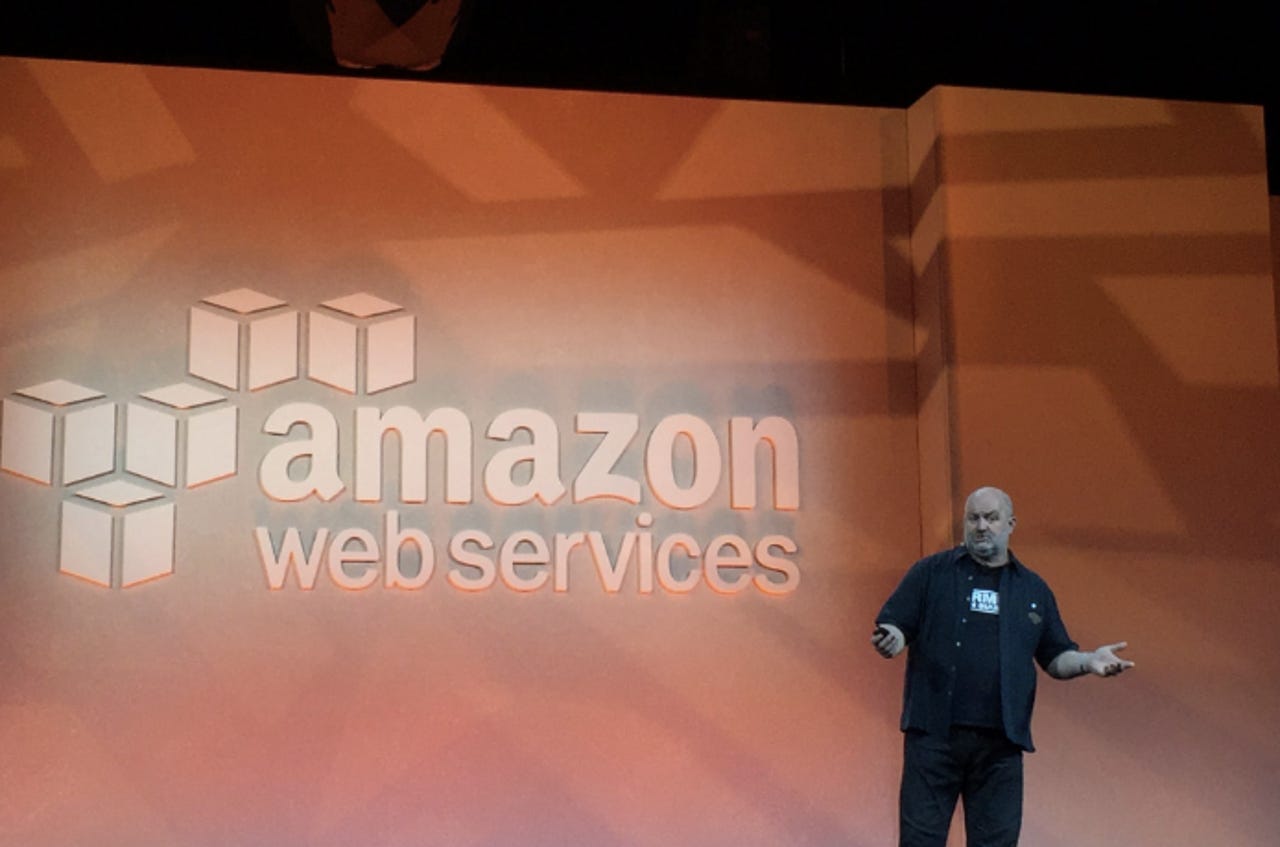AWS bolsters cloud platform with real-time analytics, gives more content controls to developers


AWS CTO Werner Vogels.
Amazon Web Services is rolling out a bevy of new capabilities for its billion-dollar cloud computing platform.
During a keynote speech Thursday at its New York City summit, the cloud infrastructure giant announced a new analytics service for streaming real-time data, a new load balancer for its customers using Elastic Load Balancing (ELB), and expanded container support across its platform.
Kinesis Analytics is a new service by AWS designed to make it easier to query real-time streaming data with SQL. It's built on AWS's Kinesis real-time streaming data platform, which helps developers work with real-time streaming data in the AWS Cloud.
In a blog post, AWS "chief evangelist" Jeff Barr said Kinesis Analytics will push the boundaries on the amount of data that can be ingested in real time.
"You can now run continuous SQL queries against your streaming data, filtering, transforming, and summarizing the data as it arrives," he wrote. "You can focus on processing the data and extracting business value from it instead of wasting your time on infrastructure. You can build a powerful, end-to-end stream processing pipeline in 5 minutes without having to write anything more complex than a SQL query."
Kinesis is available in Amazon's EU (Ireland), US East (N. Virginia) and US West (Oregon) regions. Pricing is by the number of processing units required.
The cloud juggernaut also launched a new Application Load Balancer (ALB) option for customers using its Elastic Load Balancing tool, which has been available since 2009.
AWS CTO Werner Vogels explained that the new ALB offers content-based routing, which gives developers more control over the way data is distributed across servers. In the original option, now called the Classic Load Balancer, content was distributed based off the computing decision made by the load balancer, not the developer.
The revamped ALB also provides support for applications that run in containers.
"This gives you complete control about how to send traffic to individual components in your system," Vogels said.
Elsewhere in its barrage of announcements, AWS said that it's lowering the price of snapshots for volumes of data stored in the Elastic Block Store (EBS) service by 47 percent. Typically, snapshots are used by developers to back up data in the AWS S3 storage service and restore EBS when necessary.
There are also new usage plans for the AWS API Gateway, which is used to help developers build and monetize APIs and then create ecosystems around them. Developers can now create usage plans for different levels of access, different categories of users, and so forth.
Throughout his keynote, Vogels touted how customers such as Lyft and General Electric are using various aspects of the AWS Cloud platform. GE, which Vogels said is the only company left from the original S&P 500, is moving more than 9,000 of their workloads over to AWS and closing data centers in the process.
"Why? Because they transformed into a digital company," he said.
Lyft's CTO Chris Lambert was also on hand to talk about how the on-demand taxi service once used AWS' auto scaling to add 24 cities in one day back in 2014. Lyft is also using the Amazon Kinesis pipeline for real-time fraud-risk analysis.
Looking back, Vogels noted the 10-year anniversary of AWS and how Amazon has become the "world's most customer-centric company," even in its cloud business.
"We had, as Amazon, been on the receiving end of acquiring IT infrastructure, and we hated it," Vogels said. "The only way to bring down our costs was to write a big check for hardware and licenses."
"What we needed then was to pay for what we actually used; there shouldn't be a contract if it wasn't needed. So we wanted to make sure our users had just that -- access to capacity in minutes. It is that model that still drives us. That, and all the technology built on the side."